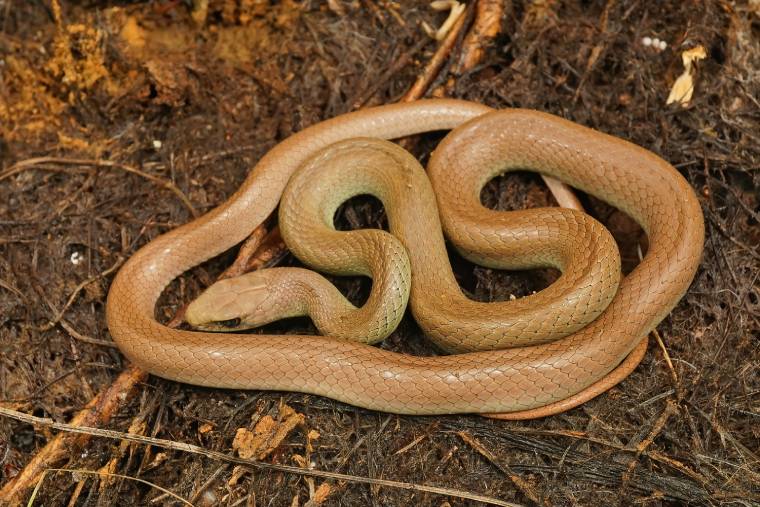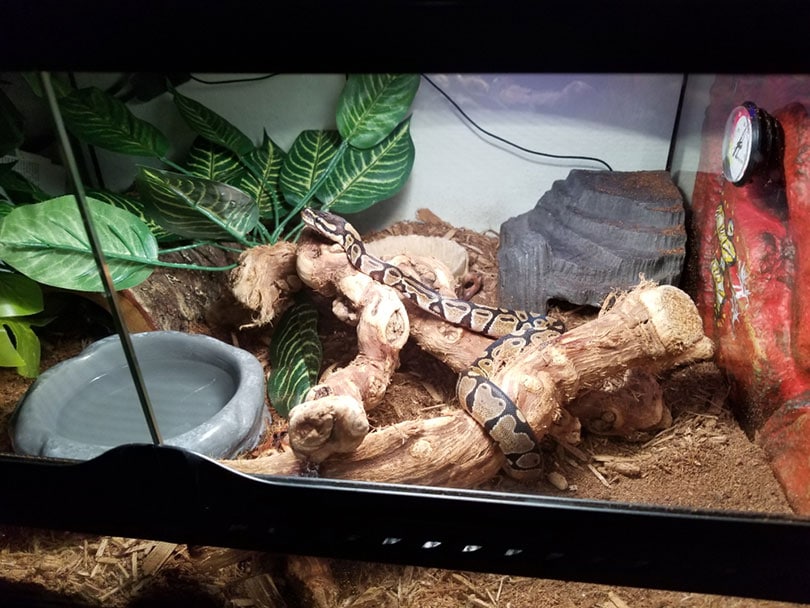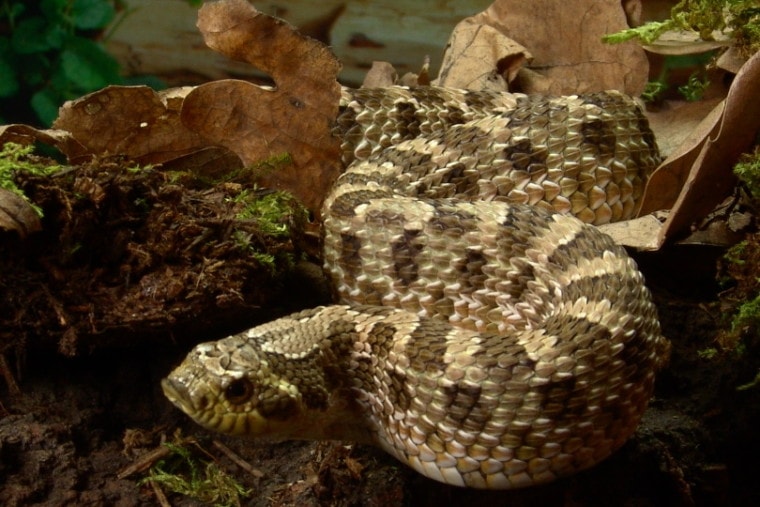
There are many out there who are enthusiastic about getting into reptiles and possibly interested in breeding them. Some people don’t know where to start. They can be intimidating, especially snakes. They bite! They have venom! They have fangs and some constrict their prey to death. Well, if these are your concerns then look no further. The Western Hognose Snake is a rather docile creature, easy to take care of, and is a soft introduction into the world of snakes. But as simple as they are, you do need to ensure that they have the proper environment and diet. Here’s what you need to know about the Western Hognose Snake.
Quick Facts about Western Hognose Snake
| Species Name: | Heterodon nasicus |
| Common Name: | Western Hognose Snake |
| Care Level: | Easy |
| Lifespan: | 15 to 20 years, 10 to 18 in the wild |
| Adult Size: | 20 – 36 inches |
| Diet: | Meat |
| Minimum Tank Size: | 20 – 30 gallon |
| Temperature & Humidity | 75 – 90 degrees Fahrenheit |
Do Western Hognose Snakes Make Good Pets?
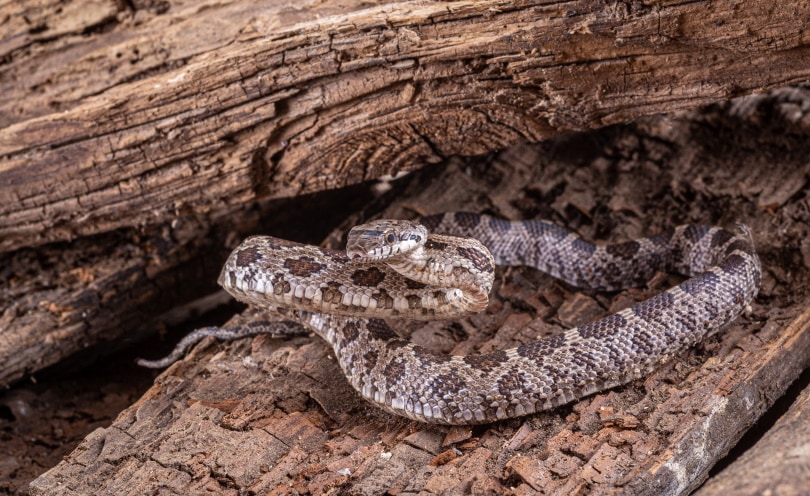
These snakes have a relatively gentle temperament and are effectively harmless to humans. They rarely bite humans, even when threatened. Their venom will cause some skin irritation but is not fatal. Their gentle temperament makes them a great choice for first-time snake/reptile owners.
Appearance
The Western Hognose Snake receives its name from the fact that it occurs from the regions of Southern Canada to Mexico. Its nose is also slightly upturned, hence ‘hognose.’ They are only about a foot and a half long (three feet at the most) and weigh about half a pound. Their colors are similar to most rattlesnakes. The males have longer and more narrow tails whereas the females have shorter and thicker tails.
How to Take Care of Western Hognose Snake
Habitat, Tank Conditions & Setup
Firstly, thoroughly clean the tank and make sure that there are no contaminants. There is no UV light required for this snake. Instead, you can use a basking bulb for light and heat. Since Western Hognoses are diurnal reptiles, you can count on them using this light during the daytime. A good substrate is shredded aspen bedding but you can also use coconut fiber. Mix the coconut fiber with sand in a bucket and get wet enough to mix thoroughly. This will allow it to hold shape and humidity better (you don’t want it too dry).
Tank
A tank that has at least 20 gallons of volume will do fine. However, it is better if they have more floor room to move around. So, while the tank does not necessarily need to be deep, it should be wider. Western Hognoses, like many reptiles, can be frightened by their reflections on the side of the terrarium. Blocking out the side walls with some construction paper would do your snake well. Lastly, don’t forget to include a water dish.
Lighting
They do not require UV light. An incandescent snake light bulb should suffice. Western Hognoses need about 14 hours of light per day.
Heating (Temperature & Humidity)
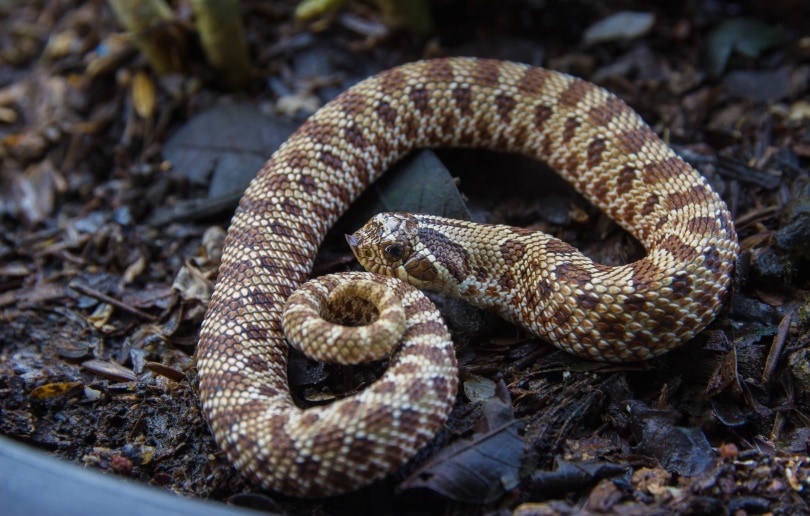
You are going to want a temperature gradient within the tank. This means you need a basking spot and a cooler spot. Putting a lightbulb on one end and adjusting the proximity to achieve about 90 degrees Fahrenheit will be perfect for your Hognose’s warm spot. The warm/cooler spot should be adjusted to somewhere in the 70s to 80s. 40% humidity is perfect for the Western Hognose snakes
Substrate
Shredded aspen bedding or coconut coir make good substrates mixed with sand.
| Tank Recommendation | |
| Tank Type | 20 gallon glass vivarium |
| Lighting | Incandescent bulb/No UV |
| Heating | Gradient, warm spot/cooler spot |
| Best Substrate | Shredded aspen bedding |
Feeding Your Western Hognose Snake
Western Hognose snakes should be fed weekly. The adults will do well to have a small thawed mouse as its meal. The size of the meal should not exceed the diameter of your snake’s head. You will notice a bump after it has been consumed, but the bump should go away after about 24 hours. The hatchlings can be fed once a week. Feed them a small, thawed, pinky mouse that you can purchase at your local pet store. They may not take it right away. If you are concerned that they are not going to eat it, scent the mouse with some juice from a can of tuna or salmon. This should help them warm up to their meal.
| Diet Summary | |
| Fruits: | 0% of diet |
| Insects: | 0% of diet |
| Meat: | 100% of diet – small frozen or thawed mice |
| Supplements Required: | N/A |
Keeping Your Western Hognose Snake Healthy
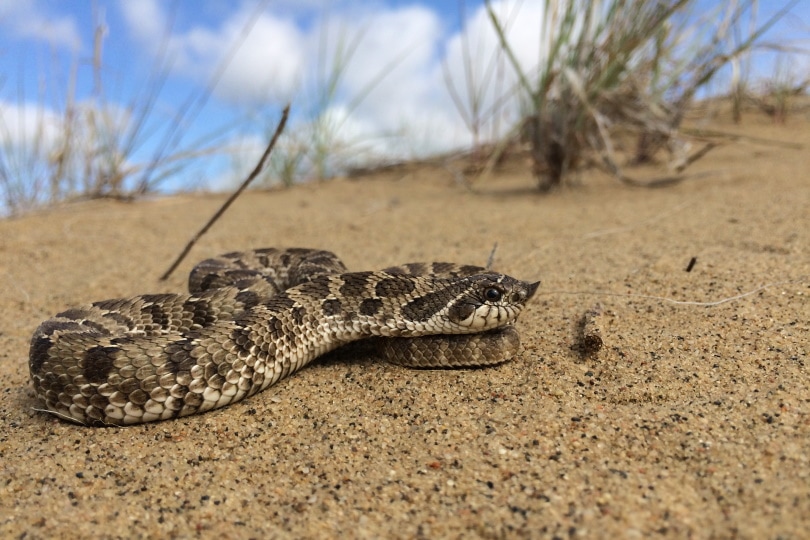
While this is a relatively easy snake to take care of, there are some things you should look out for.
Parasites
This will be less of a problem for your Western Hognose if you are feeding it only mice. This is because parasites are often acquired through eating amphibians. Hognoses love frogs! You will know that your snake has a parasite if he has a loss of appetite, foul-smelling feces, or is regurgitating. You can bring a stool sample to a reptile vet. If there are parasites, then an oral deworming medication will be prescribed.
Mites
Another nuisance that can afflict reptiles is mites. They thrive on eating the blood of reptiles. You will know that your Western Hognose has mites if he has black dots on his head, specifically around the eyes and nose. If he is rubbing up against the tank, this could be an indicator that he is itching. Use a mite spray to help clean him up.
Respiratory Issues
You may hear a rattle while your Hognose is breathing or they have stringy saliva. These are indicators that he could have a respiratory infection. Ensure that the conditions in the tank, especially humidity and temperature are optimal. Then see the reptile vet to get an antibiotic.
Lifespan

Since there are more natural threats in the wild, Western Hognoses who are in captivity tend to have a bit longer lifespan. They can live as little as 10 years in the wild whereas in captivity they can live up to 20 years.
Breeding
Western Hognose snakes are described as polygamous. This means that the females will often mate multiple times in one season to ensure fertilization. But the males will also seek out multiple mates.
Are Western Hognose Snakes Friendly? Our Handling Advice
These snakes are great for first-time snake owners because they are so easy to handle. They very rarely bite and are not aggressive. You can handle them with ease. Just be sure to start by touching them from underneath. Don’t scoop them up. If you touch them from overhead, it can startle them. They don’t climb well, so give them some support when holding them.
Shedding & Brumation: What to Expect
Shedding is a normal part of the life of a Western Hognose. Babies will shed more often since they are growing. You’ll know that your snake is about to shed because the eyes will start to look a bit cloudy with a blue tint. They shed their skin all at once, so it’s important to ensure a mostly dry environment- they live in more arid places in the wild. As far as brumation, they will start to have an onset of sluggishness as early as November and sometimes as late as February.
How Much Do Western Hognose Snake Cost?

Adults usually cost around $250 whereas hatchlings cost around $175, from a private breeder.
Care Guide Summary
Conclusion
If you want to give snake ownership a go, this is a safe, easy, and low-demand pet to try. They are gentle but remember they do have fangs (they are rear-fanged) so you should handle them with respect even though they can’t hurt you.
Featured Image Credit: skifbook, Shutterstock

